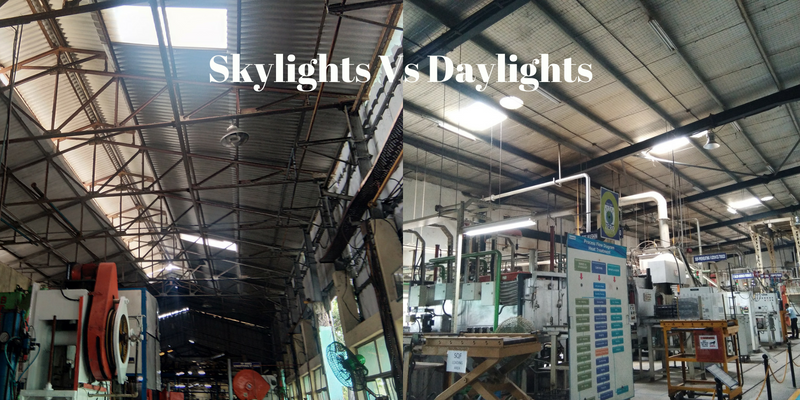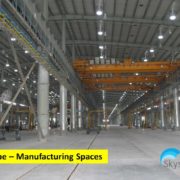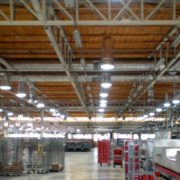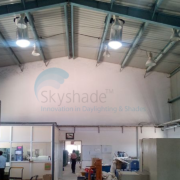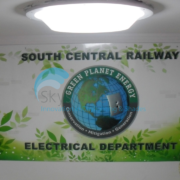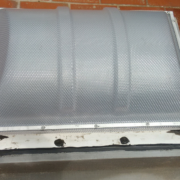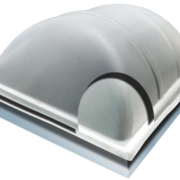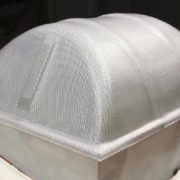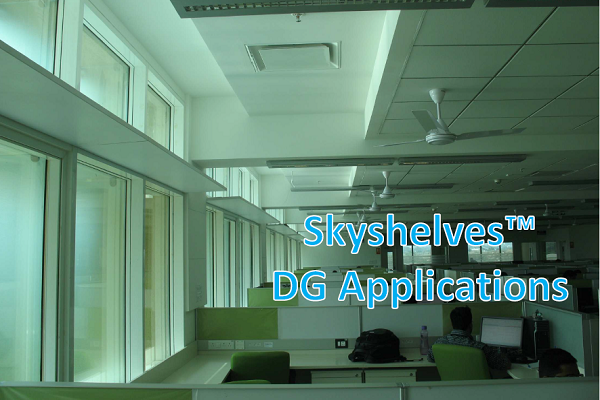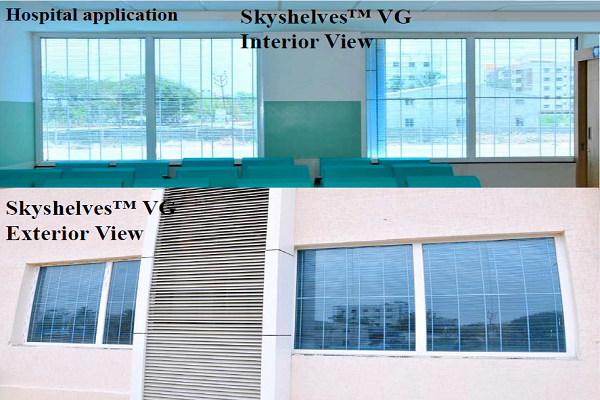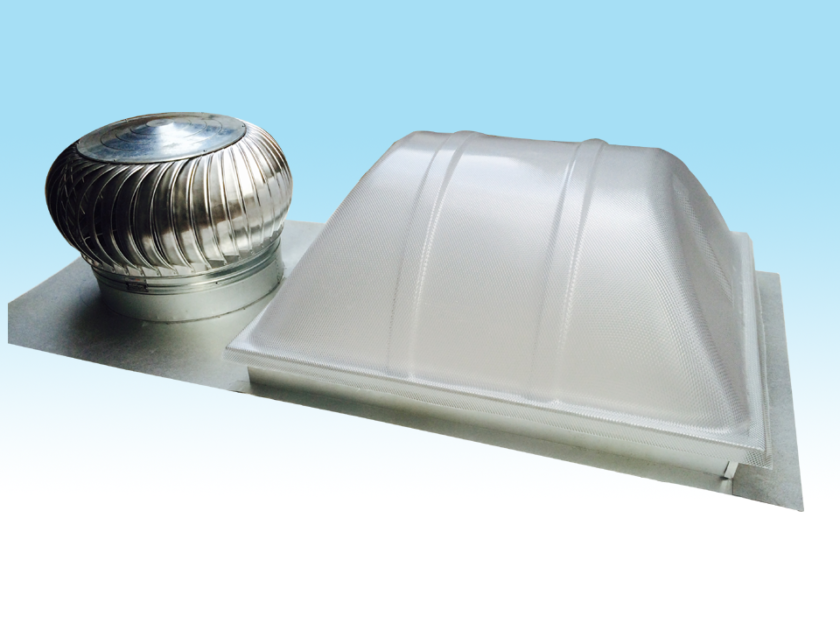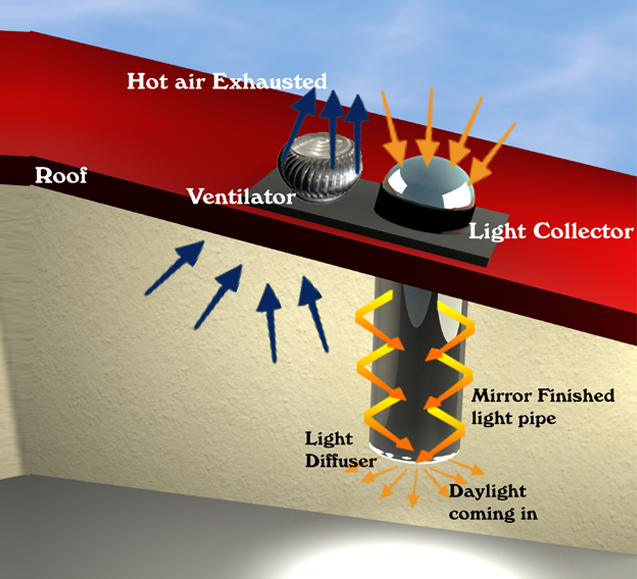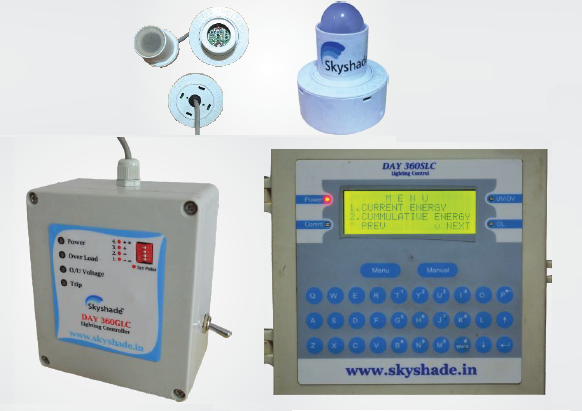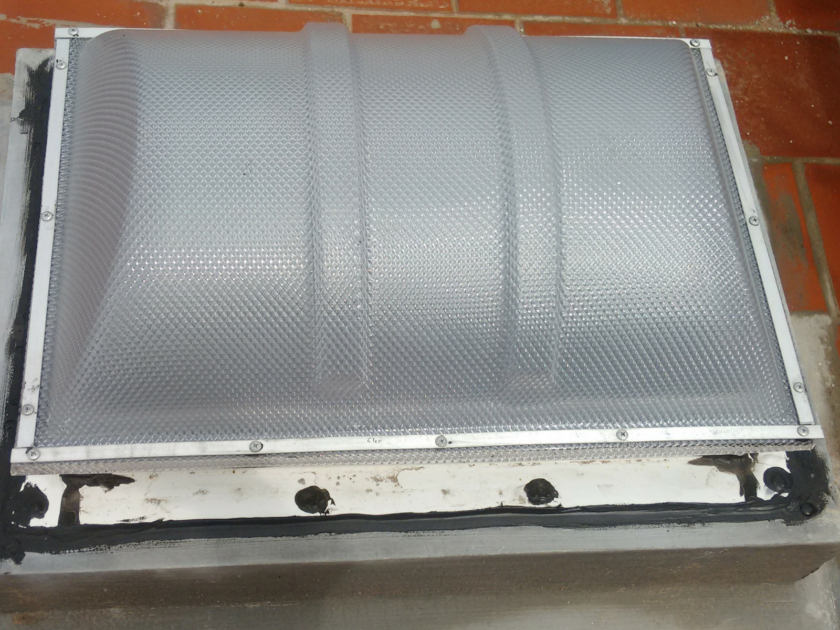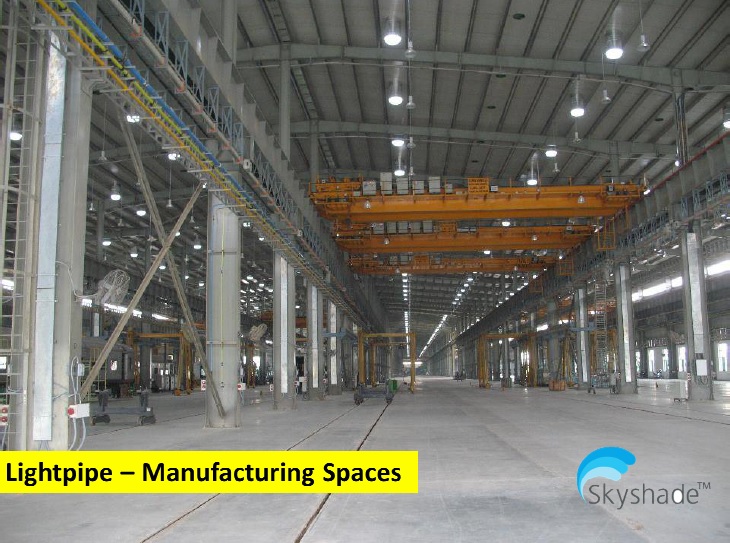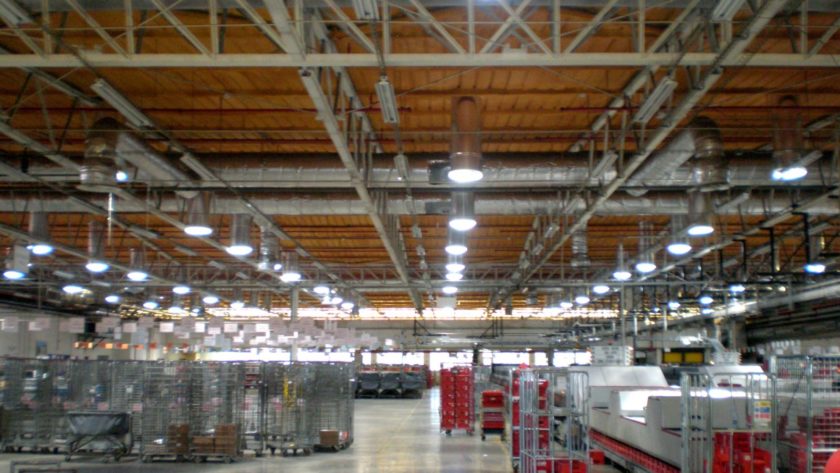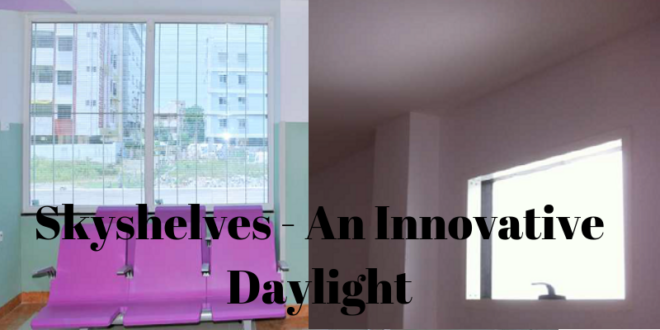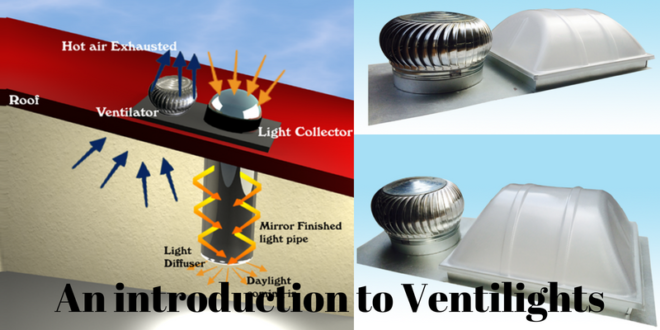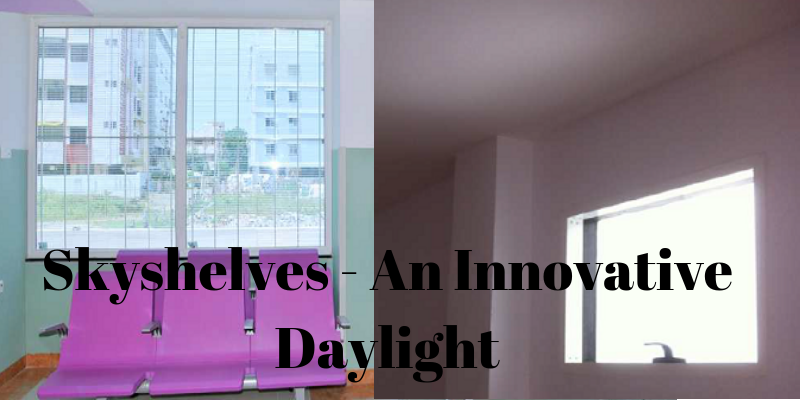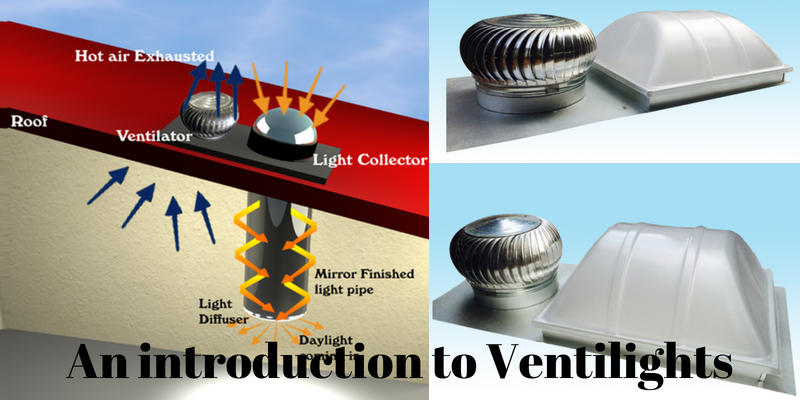Comparison between Roof skylights and Daylighting technologies
The use of daylights i.e., bringing sunlight in to buildings without any heat has become prevalent these days. These daylights are replacing the conventional skylights or strip lights. The daylights have many advantages over the conventional skylights. The factors that show that daylights are better than traditional skylights are listed below.
- Skylight to floor ratio
- Material
- Construction
- Spread of light
- Roof area usage
- Life & Maintenance required
- Heat transfer
- Automation
- Product Technologies
Skylight to floor ratio (SFR)
The ratio of skylight area to the floor area is called the Skylight to floor ratio. For example, if a 2,000 sq. ft room has a 200 sq. ft. skylight area, then the SFR is 10% (2000 / 200). For traditional skylights the SFR is anywhere between 7 – 9%. In case of daylights, the SFR is less than 2%. This low SFR ensures that less are of the roof is cut opened for the sunlight to come in. Moreover, since the opening is of smaller size, the transfer of heat is almost negligible.
Read: How to choose the right daylight?
Material
Traditional skylights use fiber reinforced plastic (FRP) or poly carbonate sheets. These sheets usually become yellowish over a time and are prone to breakage and water leakage. The daylights are made with high impact UV resistance clear, transparent poly carbonate dome or prismatic light diffusers using micro replication technology systems.
Construction
The traditional skylights are either single or double glazed profiled to the shape of the roof sheets and overlapped with metal roof sheets. The daylights are fixed over metal kerb raised by 125 – 200mm above roof. They are provided with water divert channels and leak proof arrangement.
Spread of Light
In the traditional skylights, the spread of light depends on the movement of the sun and there is a build up of hot spots resulting in non uniform lighting. In the daylights, the spread of light is uniform and not affected by the movement of the sun.
Roof area usage
The traditional skylights occupy around 7 – 10% of the roof area, while daylights occupy less than 2% of the roof thereby reducing the roof required to be cut open.
Life & Maintenance Required
The life of traditional skylights is around five years which is very less when compared to the 15 years life of the daylights. The daylights are self cleaning and relatively lesser maintenance is required.
Read: The benefits of daylights in work place
Heat transfer
Since the traditional skylights need more roof area, the transfer of heat is high. In the case of daylights, the cut roof area is very less and the daylight themselves have mechanism to transmit less or negligible heat, there by preventing the transfer of much heat.
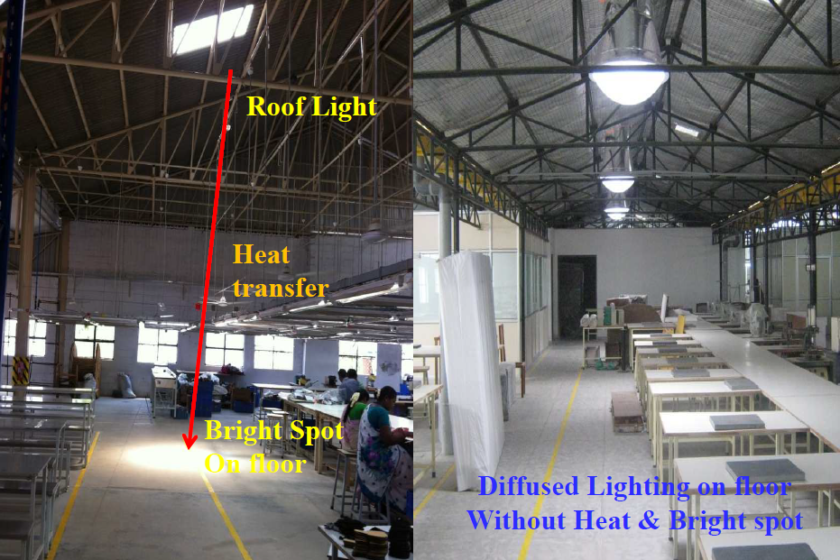
Automation
The daylights can be integrated with lighting controls equipped with sensors, thereby automating the switching pattern of the electric lights. The required lux level is set in the controller. If the daylights, give adequate lux level, the electric lights remain switched off. When there is a reduction in the lux level, the electric lights are switched on automatically either in a step by step way or in one ago as set in the controller.The presence of lighting controls helps in further savings of 30 – 50%.
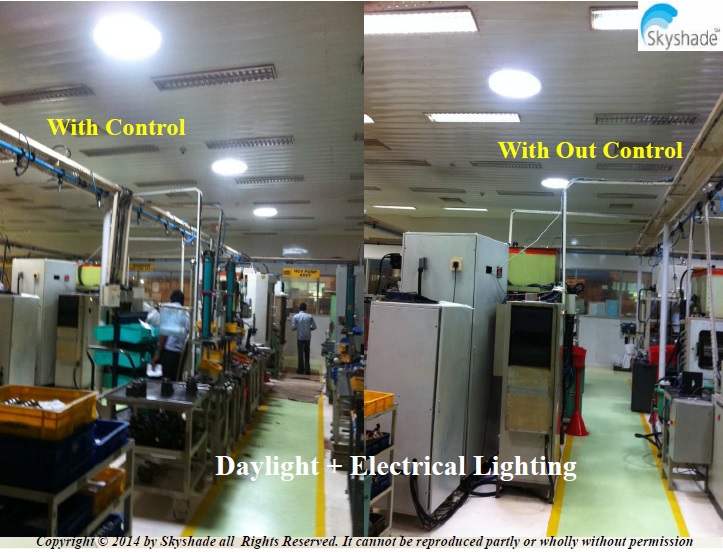
Product Technologies
The daylights have different technologies such as tubular lighting, prismatic lighting, lighting control, there by making it the most efficient.
Comparision between skylights and daylights
| Factors | Skylights | Daylights |
|---|---|---|
| Skylight to floor ratio (SFR) | >5% | <2% |
| Material | Fiber Reinforced Plastic (FRP) or poly carbonate sheets | High impact UV resistance clear, transparent poly carbonate dome or prismatic light diffusers using micro replication technology systems |
| Construction | Profiled to the shape of the roof sheets and overlapped with metal roof sheets | Fixed over metal kerb elevated by 125 - 200mm above roof. Provided with water divert channels and leak proof arrangement. |
| Spread of Light | Build up of hot spots and non uniform lighting | No build up of hot spots and uniform lighting |
| Roof area usage | 7 - 10% | <2% |
| Life & Maintenance Required | Around 5 Years | Up to 15 years with little or negligible maintenance |
| Heat transfer | High | Negligible |
| Automation | Not Available | can be integrated with lighting controls |
| Product Technologies | Not Available | Tubular | Prismatic | Lighting Control |
As listed above, it can be easily concluded that the daylights have many benefits over the traditional skylights and it is wise to opt for daylights.

